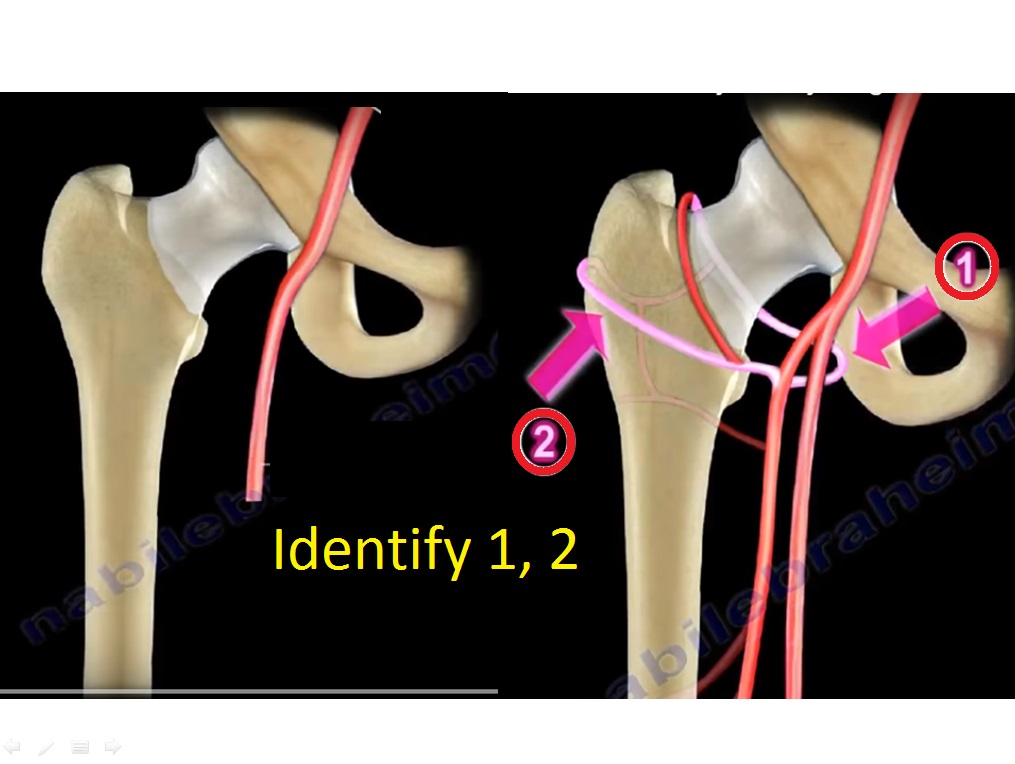Courtesy: Prof Nabil Ebraheim, University of Toledo, Ohio, USA
- Lateral Circumflex Femoral Artery The lateral circumflex femoral artery is a branch of the profunda femoris artery.
- The profunda femoris artery is the main blood supply to the thigh.
- The profunda femoris artery gives two circumflex arteries and four perforating branches.
- The two circumflex arteries are 1. The medial circumflex femoral artery 2. The lateral circumflex femoral artery
- The lateral circumflex artery is directed towards the lateral side.
- From the femoral triangle of the thigh, the femoral nerve is lateral to the femoral artery. As the lateral circumflex femoral artery branches off of the profunda artery and goes laterally, it crosses the femoral nerve and passes under the Sartorius muscle, which is the lateral boundary of the femoral triangle.
- The lateral circumflex femoral artery gives three branches: Ascending Branch, Descending Branch, Transverse Branch
- The ascending branch passes upwards beneath the tensor fascia lata and goes up to the anterior superior iliac spine (ASIS).
- The descending branch descends to the knee joint.
- The transverse branch goes towards the greater trochanter and also goes to the cruciate anastomosis. The ascending branch of the LCFA is important.
- The LCFA is at risk of injury with Smith-Petersen Approach or anterior approach to the hip.
- The LCFA is found in the intervenous plane between the tensor fascia lata and the Sartorius muscle.
- It also passes under the rectus femoris muscle. The LCFA will be found deeper to that and this artery must be found and ligated to prevent excessive bleeding.

Leave a Reply